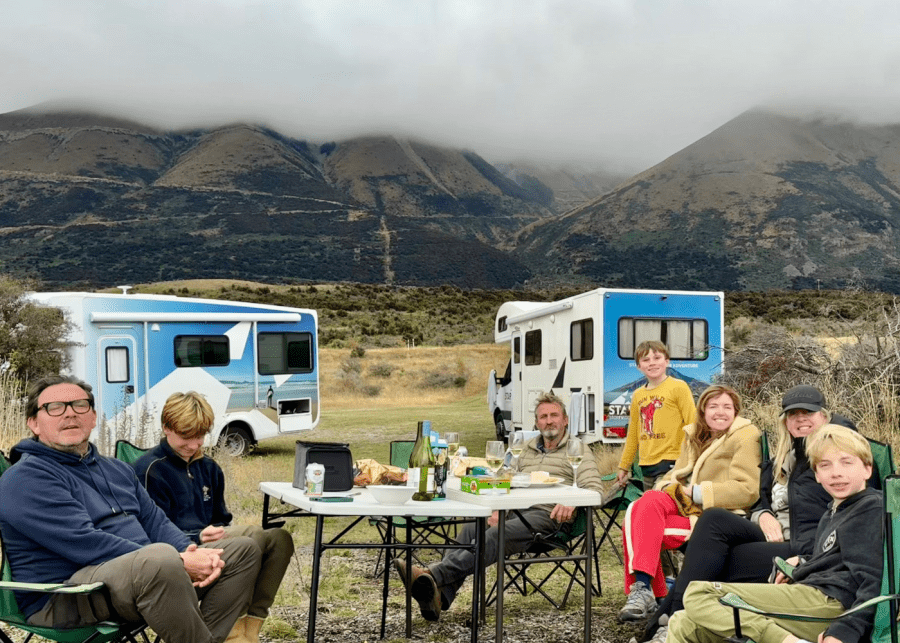For generations, the quintessential family road trip often conjured images of tightly packed vehicles, squabbles over limited legroom, and the strategic Tetris of luggage in every available nook. The sheer logistics of moving an entire household, complete with children, luggage, and the occasional pet, often overshadowed the excitement of the destination itself. These were journeys of endurance as much as enjoyment, defined by compromises and the persistent question of “Are we there yet?”
However, the notion that family travel must equate to cramped discomfort is rapidly becoming a relic of the past. A fundamental shift is underway, moving away from merely transporting to truly experiencing the journey together. Modern families are now discovering innovative, spacious, and stress-reducing alternatives that redefine the very essence of traveling with loved ones. This evolution isn’t just about getting from point A to point B; it’s about making the entire adventure—from departure to arrival-an integral and cherished part of the family’s shared memories.
Beyond the Minivan: Embracing Space and Comfort on the Road
The limitations of personal vehicles for extended family excursions are well-known. A standard minivan, while practical for daily errands, quickly reaches its capacity when faced with multiple children, their car seats, sports equipment, strollers, and several days’ worth of luggage. The result is often a claustrophobic environment where tempers fray, and the simple act of stretching becomes a luxury. This inherent constraint has driven many families to seek out more expansive solutions, where the journey itself isn’t a precursor to discomfort but an extension of the vacation’s relaxation.
The answer for an increasing number of families lies in embracing dedicated larger vehicle rentals, often in the form of bus rentals for family trips. These options provide an unprecedented amount of space, offering generous legroom for every passenger, ample dedicated compartments for luggage that eliminate the need for creative packing solutions, and often onboard amenities like entertainment systems or even small restrooms. This shift isn’t just about adding square footage; it’s about transforming the travel experience from a test of endurance into a mobile haven where everyone can unwind, play, and genuinely enjoy the ride.
Group Dynamics and Shared Experiences: The Rise of Co-Travel
Modern family structures and social networks often extend beyond the nuclear unit, encompassing grandparents, aunts, uncles, cousins, or even close family friends who share a desire for collective adventures. Traveling with multiple families or a large extended group in separate vehicles, however, presents a formidable logistical puzzle. Coordinating departure times, managing multiple fuel stops, navigating unfamiliar routes in convoy, and finding parking for several cars at every destination can quickly erode the joy of the trip. These challenges often lead to fragmented experiences, with families arriving at different times and missing out on the communal spirit of the journey. The solution gaining traction is embracing co-travel—a unified approach that fosters togetherness from the moment the wheels start turning. For instance, considering a church bus rental for a large family reunion or a multi-family vacation provides a single, communal space where conversations flow freely, games can be played, and shared meals or snacks can be enjoyed en route. This strategy transforms travel from a series of independent commutes into a continuous shared experience, knitting the group closer long before they reach their final destination and turning transit into an active, social part of the adventure.
Customization and Convenience: Tailoring the Journey to Your Needs
The era of rigid travel schedules and limited itinerary flexibility is waning, especially for families who value autonomy and personalized experiences. Traditional public transportation, while efficient for individual commuters, rarely caters to the nuanced needs of a family with small children, diverse interests, or specific accessibility requirements.
| Feature | Customization | Convenience |
| Itinerary | Flexible schedules that adapt to a family’s rhythm and desires allow for deviation and spontaneity. | Professional drivers reduce the stress of navigation, traffic, and parking. |
| Stops | Freedom to make impromptu stops at attractions or scenic overlooks, linger longer at desired points. | Direct-to-destination service eliminates the need for multiple coordination points or transfers. |
| Route | Ability to deviate slightly for specific interests (e.g., a restaurant), not restricted by pre-planned routes. | Alleviates logistical burden for parents, allowing them to engage with children and scenery. |
| Needs-Based | Caters to the nuanced needs of families (children, interests, accessibility requirements). | Transforms travel from a chore into a seamless, enjoyable progression. |
| Driver Role | Empowers the family to dictate the journey’s pace and specific stops. | Provides a stress-free experience by offloading driving responsibilities. |
Beyond the Destination: Making the Journey Part of the Vacation
For too long, the journey has been perceived as a mere necessity, a time to endure before the real vacation begins. This mindset views transit as a sterile, often tedious interlude between the comfort of home and the excitement of the destination.
However, contemporary family travel embraces a paradigm shift: the journey itself is recognized as an integral, enriching component of the overall vacation experience. When families choose spacious, comfortable, and communal travel options, the act of moving from one place to another transforms from a chore into a dedicated segment of shared enjoyment.
Imagine children playing board games on a table, watching a movie together on an integrated screen, or simply engaging in lively conversation without the constrictions of a typical car. These environments foster opportunities for storytelling, quiet relaxation, or even enjoying a meal together on the go. This intentional elevation of the travel process means that memories aren’t just made at the hotel or attraction, but also during the laughter and camaraderie experienced on the road. The journey becomes an extension of the adventure, demonstrating that modern family travel prioritizes holistic enjoyment, valuing every moment from departure to triumphant arrival.
Conclusion
The era of dreading the family road trip, with its associated cramped conditions and logistical nightmares, is unequivocally over. A profound evolution in how families approach travel has ushered in an age of unprecedented comfort, connectivity, and customization. We’ve moved beyond merely enduring the journey to actively embracing it as an integral, enriching part of the vacation itself. The shift towards spacious vehicle options caters to the fundamental human need for personal space and freedom of movement, transforming transit from a test of patience into a relaxing interlude.
Furthermore, the burgeoning trend of co-travel underscores a deeper desire for shared experiences, fostering stronger bonds and creating collective memories that begin the moment the wheels start turning. When coupled with the unparalleled convenience of tailored itineraries and the often surprising cost-effectiveness of these solutions, the picture of modern family travel emerges as one of pure possibility. Families are no longer confined by the limitations of their vehicles; they are liberated to explore, connect, and enjoy every mile of their adventures. The future of family travel is not just about reaching a destination; it’s about reveling in the entire journey, making every trip a truly cherished family experience.



































